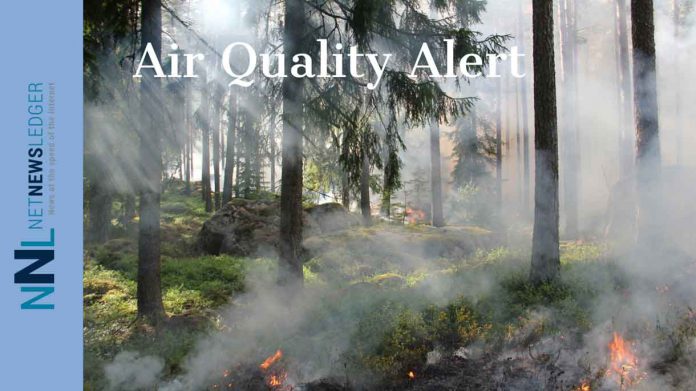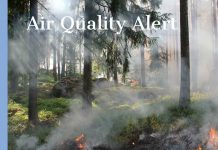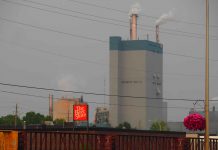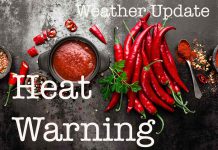Smoke from Wildfires Impacts Air Quality – Current Situation in Northern Alberta, Northern Saskatchewan, and Northwest Territories
Red Lake – The ongoing wildfires in northern Alberta, northern Saskatchewan, and the Northwest Territories have led to the dispersion of smoke across the regions. As a result, the air quality has significantly deteriorated, and reduced visibility is a growing concern.
Expected Duration of Poor Air Quality
The poor air quality is likely to persist throughout today before showing signs of improvement starting on Tuesday. However, the situation remains subject to change based on the wildfire activity and weather conditions.
Health Risks and Recommendations
Due to the nature of wildfire smoke, air quality and visibility can fluctuate rapidly over short distances and vary from hour to hour. Consequently, this poses health risks for individuals exposed to the smoke for extended periods.
Health Impact of Wildfire Smoke
Wildfire smoke contains harmful particles that can adversely affect everyone’s health, even at low concentrations. However, certain groups, such as people with lung or heart diseases, older adults, children, pregnant individuals, and outdoor workers, are at a higher risk of experiencing severe health effects from the smoke.
Recommended Actions to Reduce Exposure
Taking proactive measures can help individuals reduce their exposure to wildfire smoke and protect their health. The following steps are recommended:
Managing Health Conditions
If you belong to a high-risk group, it is crucial to consult with your healthcare provider to develop a management plan for wildfire smoke events. Ensure you have an adequate supply of necessary medications at home and keep them with you during the wildfire season.
Monitoring Symptoms and Air Quality
Pay attention to your symptoms and monitor the Air Quality Health Index (AQHI) regularly. Understand that people may react differently to smoke, and while mild irritation is common, it usually subsides when the smoke clears. Staying hydrated by drinking plenty of water can help the body cope with the smoke.
Indoor Air Quality Precautions
For those with HVAC systems, using the highest rated MERV filter (rated 13 or higher) and setting the fan to recirculate air constantly can improve indoor air quality. Employing a portable High Efficiency Particulate Air (HEPA) air cleaner can also help. Keep doors and windows closed if the indoor temperature is comfortable.
Seeking Clean Air Locations
When possible, take breaks from the smoke by finding locations in your community where you can access clean, cool air.
]Outdoor Protection
If you must be outdoors, consider wearing a well-fitted respirator-type mask, such as a NIOSH certified N95 or equivalent respirator, to reduce exposure to fine particles in the smoke. However, remember that respirators do not protect against gases present in wildfire smoke. Pay attention to any symptoms and adjust your activities accordingly.
Supporting Vulnerable Individuals
Check on people in your care and those around you who may be more susceptible to the health effects of smoke. Offer assistance and support as needed.
Minimizing Indoor Air Pollution
During a pollution episode, it is essential to reduce sources of indoor air pollution to maintain better indoor air quality. The following actions are recommended:
Avoiding Indoor Smoking and Vaping
Avoid smoking or vaping indoors, as it can further degrade indoor air quality.
Reducing Indoor Burning
During smoke episodes, refrain from burning incense, candles, and frying foods, and minimize the use of wood stoves to reduce indoor air pollution.
Dust Reduction
Wipe and wet mop indoor surfaces to reduce dust accumulation during periods of poor outdoor air quality.
Mental Health Considerations
The ongoing wildfire situation may cause stress, anxiety, or depression for some individuals. If you experience any emotional distress, consider seeking advice from your mental health care provider or visit https://www.wellnesstogether.ca/en-CA for support.
Staying Informed and Taking Action
Stay informed about reducing health risks and personal contribution to pollution levels by visiting www.airhealth.ca. This resource provides valuable information and current and forecast AQHI values.
In conclusion, as the wildfire smoke continues to affect air quality and visibility, it is crucial for individuals to take necessary precautions to protect their health. By following the recommended actions and being mindful of their surroundings, people can reduce their exposure to the smoke and stay safe during this challenging period.






